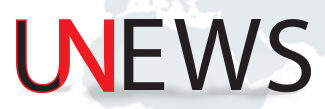Less than six months ago, Federal Reserve officials were wringing their hands about the state of the labor market. No major cracks had emerged, but monthly jobs growth had slowed and the unemployment rate was steadily ticking higher. In a bid to preserve the economy’s strength, the Fed took the unusual step of lowering interest rates by double the magnitude of its typical moves.
Those concerns have since evaporated. Officials now exude a rare confidence that the labor market is strong and set to stay that way, providing them latitude to hold rates steady for awhile.
The approach constitutes a strategic gamble, which economists by and large expect to work out. That suggests the central bank will take its time before lowering borrowing costs again and await clearer signs that price pressures are easing.
“The jobs data just aren’t calling for lower rates right now,” said Jon Faust of the Center for Financial Economics at Johns Hopkins University, who was a senior adviser to the Fed chair, Jerome H. Powell. “If the labor market seriously broke, that may warrant a policy reaction, but other than that, it takes some progress on inflation.”
Across a number of metrics, the labor market looks remarkably stable even as it has cooled. The latest employment report, released on Friday, reaffirmed that view. The pace of hiring in January slowed more than expected, to 140,000 new positions, but previous months’ totals were revised higher. In November and December, there were 100,000 more jobs created than initially estimated. The unemployment rate also ticked back down to 4 percent, a historically low level.
The number of Americans out of work and filing for weekly benefits remains low, too.
“People can get jobs and employers can find workers,” said Mary C. Daly, president of the San Francisco Fed, in an interview this week. “I don’t see any signs right now of weakening.”
Thomas Barkin, who heads the Richmond Fed, told reporters on Wednesday that the economy overall was “solid, but not overheating.”
These conditions — plus a rapidly changing mix of policies spearheaded by the Trump administration — have helped to support the Fed’s case for pausing rate cuts and turning more cautious on when to resume.
Neel Kashkari, president of the Federal Reserve Bank of Minneapolis, told CNBC on Friday that the central bank was in a good place to wait for additional information before making any policy decisions, though he predicted interest rates would be “modestly” lower by the end of the year.
The consensus is that the Fed will cut at least once more this year, although confidence in those estimates generally has whipsawed in recent weeks.
Some economists have scaled back their expectations on the basis that inflationary pressures will resurface as policies like tariffs come into effect. Others have moved in the opposite direction on fears that the labor market is not as sound as it appears.
“There’s a lot of complacency out there about what the economy really looks like,” said Neil Dutta, head of economics at Renaissance Macro Research. “Whenever the Fed says they have time, they never have so much.”
One measure that has generated attention is the hiring rate, which remains subdued. Since the beginning of the summer, the share of unemployed Americans who have been out of work for about six months or longer has also steadily risen.
Samuel Tombs, chief U.S. economist at Pantheon Macroeconomics, said he was bracing for a pickup in layoffs as well, estimating that there has been a 5 percent increase compared with December’s level based on datathat tracks written notices for large-scale layoffs at companies with 100 or more full-time employees.
Right now, those developments warrant no more than a note of caution, most economists said. Steven Kamin, who previously ran the division of international finance at the Fed and is now a senior fellow at the American Enterprise Institute, said the central bank would worry if monthly payrolls growth consistently hovered below 100,000 and the unemployment rate moved significantly higher. So long as inflation is in check, the Fed could restart rate cuts before the middle of the year, he added.
The biggest unknown for the labor market is immigration. Mr. Trump has begun to deport migrants, but not yet at the scale he pledged on the campaign trail. If net immigration falls to zero or turns negative, it could result in some combination of slower employment growth, higher wages in the most affected sectors and a lower unemployment rate, reflecting a shrinking labor force.
Julia Coronado, a former Fed economist who now runs MacroPolicy Perspectives, is among those primarily concerned about the hit to growth from these policies. Immigrants are “complements not substitutes” for domestic workers, she said, such that “if you lose construction workers, construction activity just goes slower.”
Coupled with the looming threat of tariffs, businesses are unsurprisingly on edge. If those nerves translate to a broader retrenchment, that could dent hiring more significantly.
“If I were a C.E.O. of any company right now, what would I be doing? For almost any investment I can think of, the best answer is to wait three months,” said Justin Wolfers, a professor of public policy and economics at the University of Michigan.
Source link
 Unews World
Unews World
